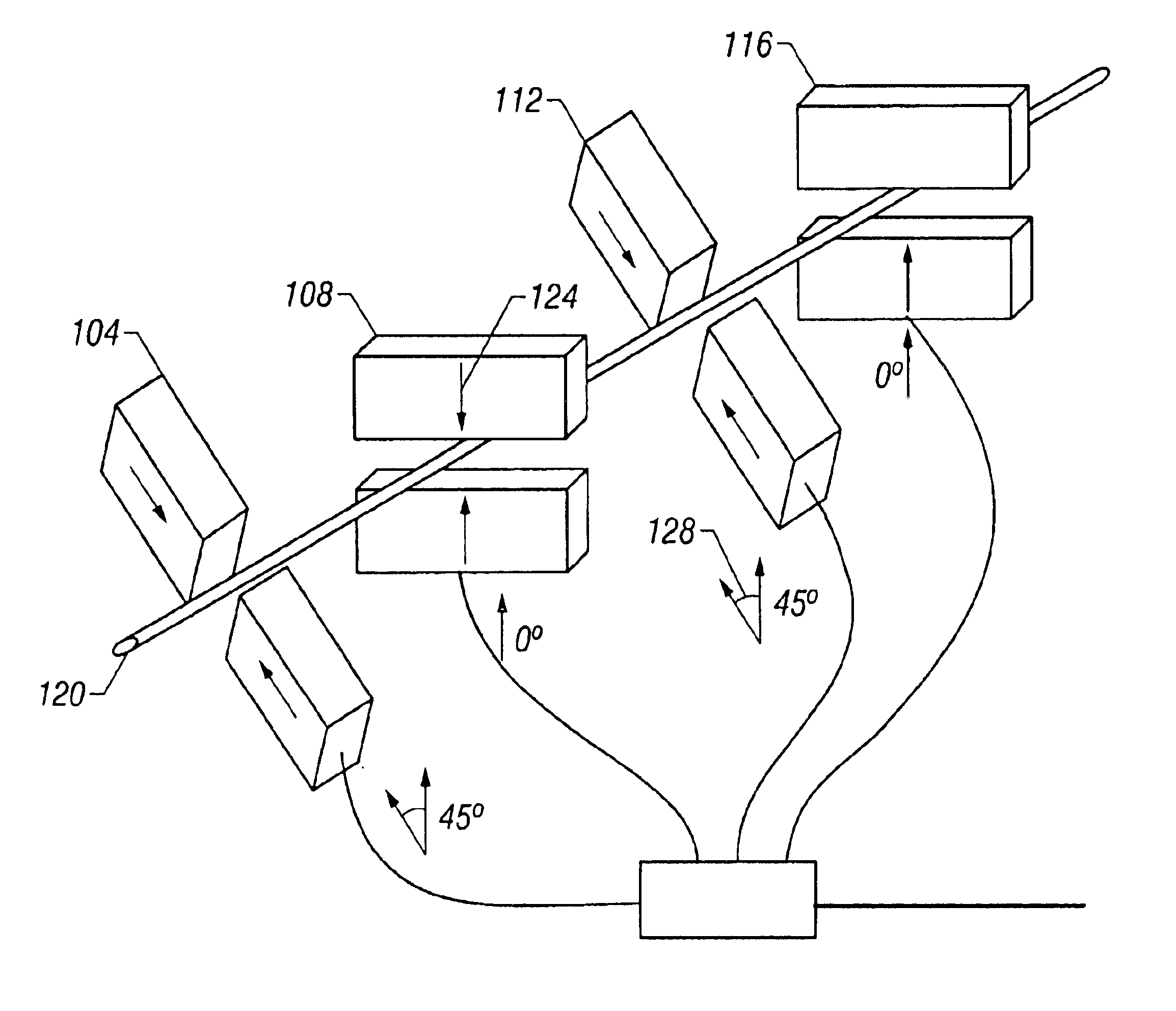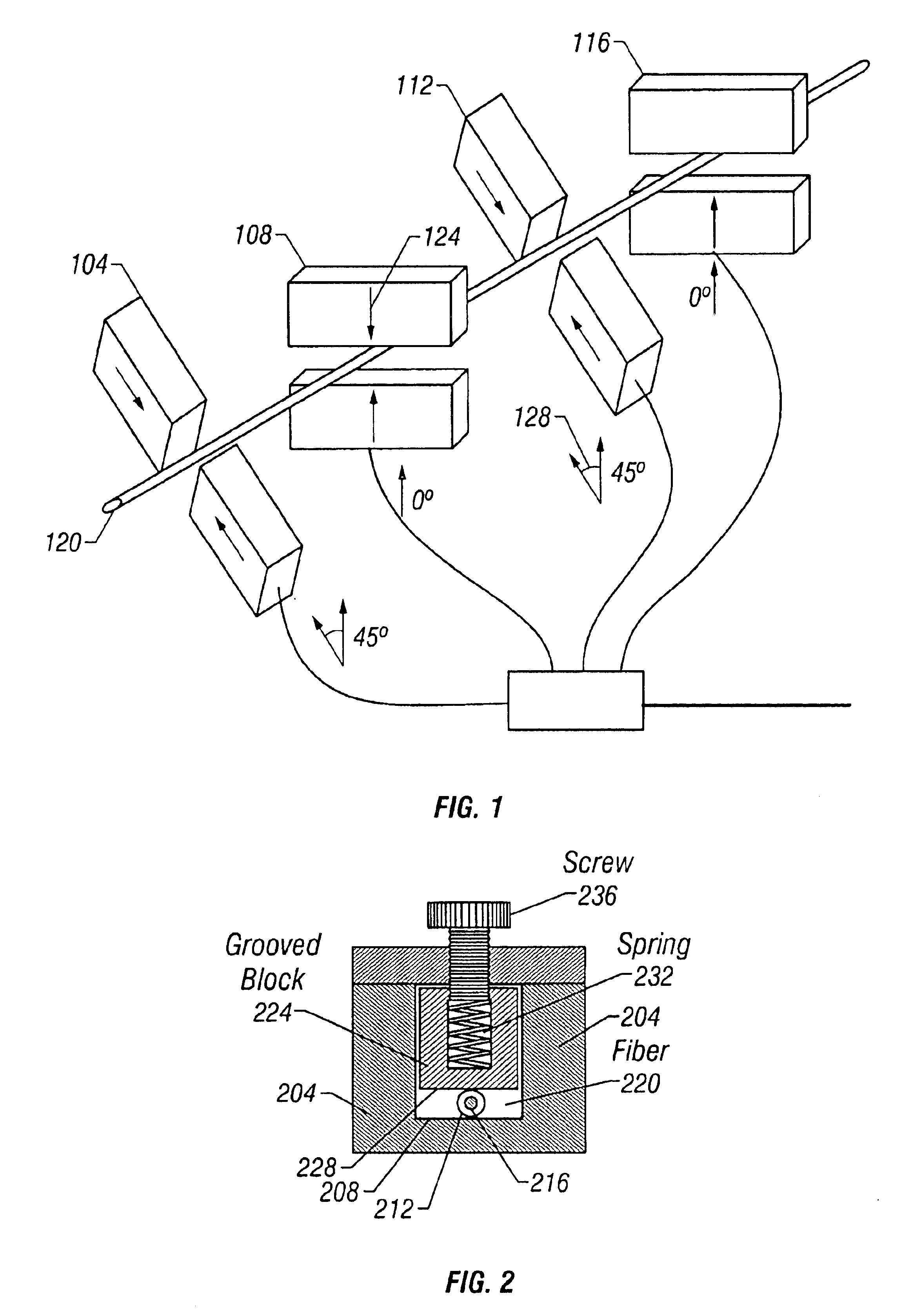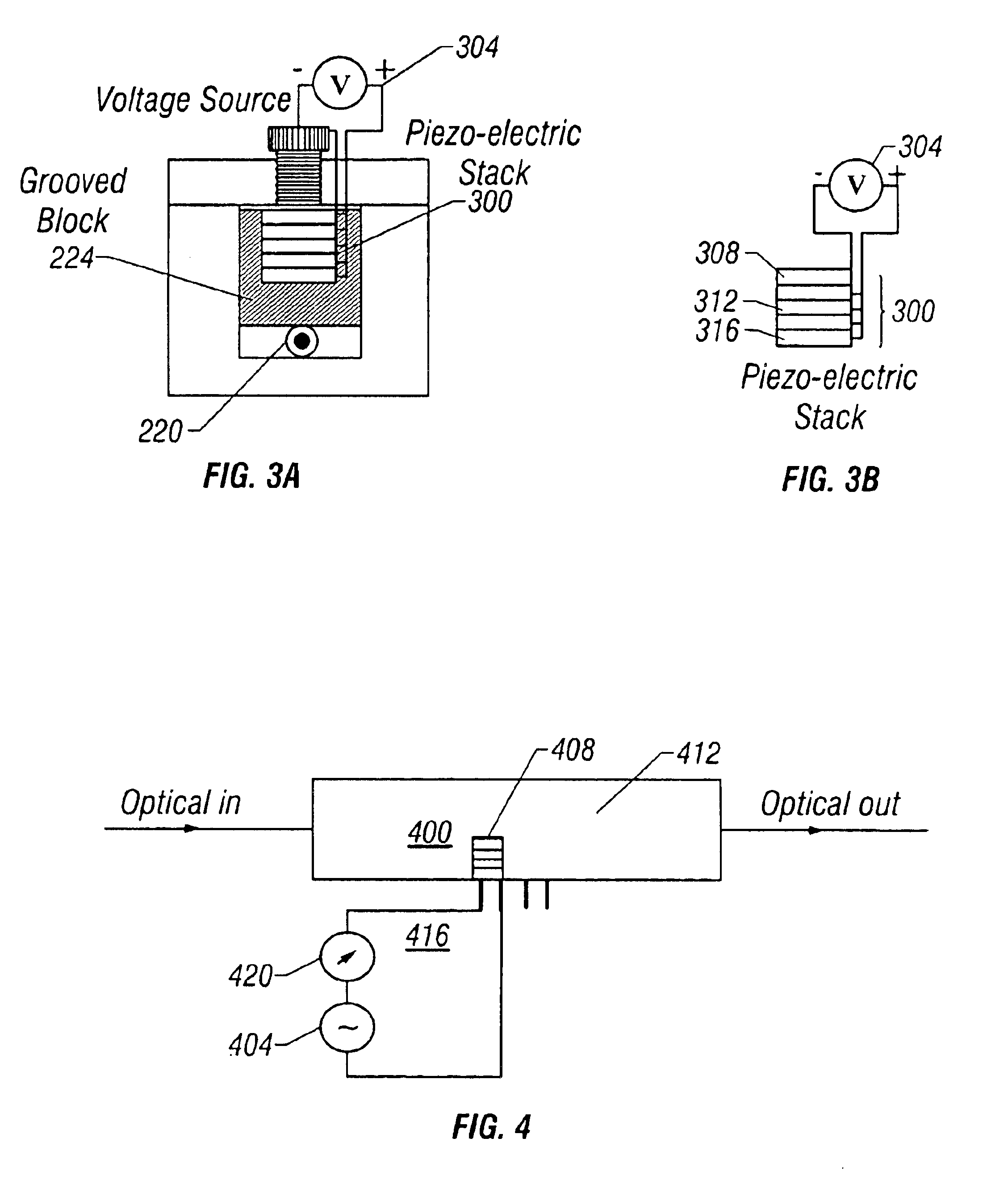Fiber devices with transverse-pressure-controlled squeezers
a technology of fiber devices and squeezers, applied in the direction of optics, optical waveguide light guides, instruments, etc., can solve the problems of back reflection and insertion loss, high signal loss, complicated techniques, etc., to reduce irregularities, minimize the possibility of optical fiber breakage, and minimize the voltage needed
- Summary
- Abstract
- Description
- Claims
- Application Information
AI Technical Summary
Benefits of technology
Problems solved by technology
Method used
Image
Examples
first embodiment
Various mechanisms may be used to control the pressure applied by pressure block 224 to optical fiber 220. In a first embodiment, a spring 232 maintains a constant force on pressure block 224. The spring 232 typically has a spring constant K such that the force applied by the pressure block is equal to F=KX where X is the distance by which the spring is compressed.
The pressure applied by the spring is adjusted by changing the compression of spring 232. In one embodiment, pressure on spring 232 is controlled by a screw 236. Threads on screw 236 interlock with threads in holder 204 such that rotation of screw 236 moves the screw in and out of holder 204. Rotation of screw 236 in a predetermined direction increases the compression of spring 232 and causes pressure block 224 to press harder against optical fiber 220. The increase in pressure further changes the index of refraction and increases the birefringence of fiber core 216.
second embodiment
In the invention, a piezo-electric actuator replaces screw236 in moving pressure block 224. FIGS. 3A and 3B illustrate a piezo electric stack 300. A electrical source such as voltages source 304 provides power to stack 300. The stack includes piezo electric elements 308, 312, 316. Altering the voltage applied across stack 300 changes the displacement of stack 300. Substituting screw 236 with piezo electric stack 300 allows a user to use the output voltage of voltage source 304 to control the force applied by pressure block 224.
One difficulty with piezo electric elements such as elements 308, 312, 316 is that significant voltages are typically needed to achieve the desired displacement. Often the voltage requirements may exceed 50 volts. Generating these relatively high voltages in solid state systems involves transformers and powerful power supplies. However, by setting and maintaining the driving frequency of voltage source 304 at the resonant frequency of piezo electric stack 300,...
PUM
| Property | Measurement | Unit |
|---|---|---|
| relative orientation angle | aaaaa | aaaaa |
| voltage | aaaaa | aaaaa |
| height | aaaaa | aaaaa |
Abstract
Description
Claims
Application Information
 Login to View More
Login to View More - R&D
- Intellectual Property
- Life Sciences
- Materials
- Tech Scout
- Unparalleled Data Quality
- Higher Quality Content
- 60% Fewer Hallucinations
Browse by: Latest US Patents, China's latest patents, Technical Efficacy Thesaurus, Application Domain, Technology Topic, Popular Technical Reports.
© 2025 PatSnap. All rights reserved.Legal|Privacy policy|Modern Slavery Act Transparency Statement|Sitemap|About US| Contact US: help@patsnap.com



